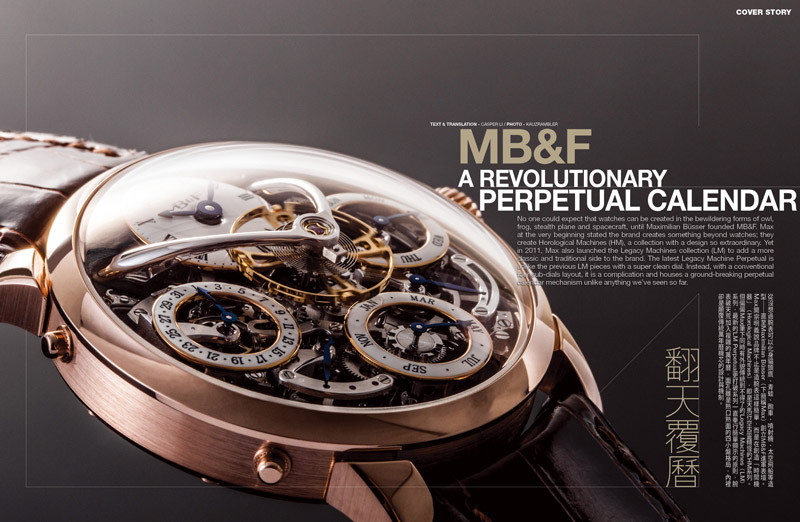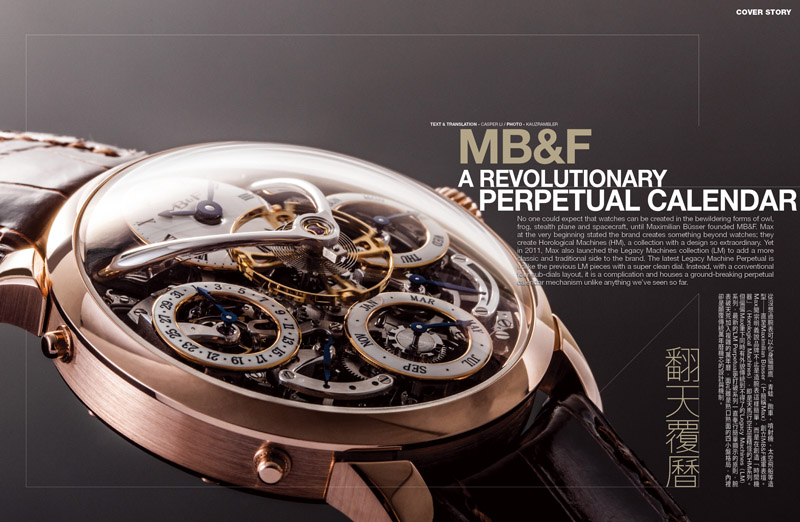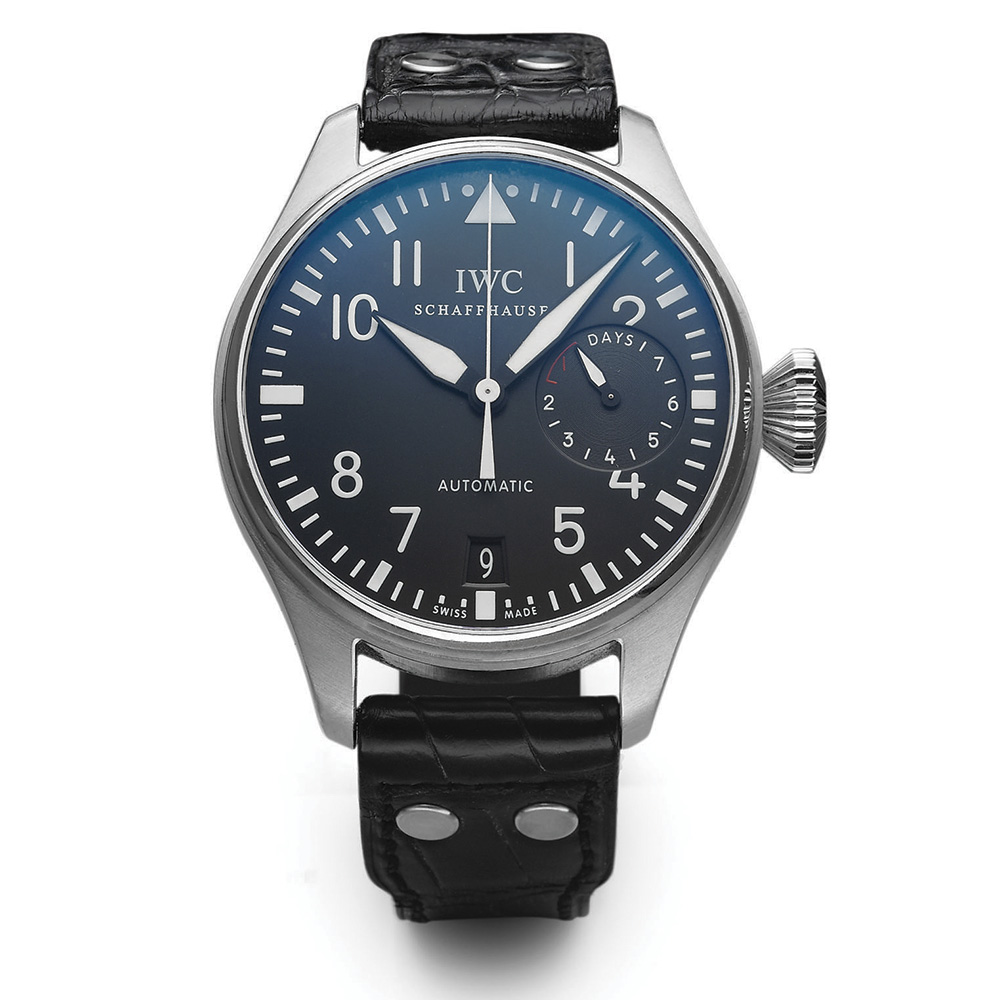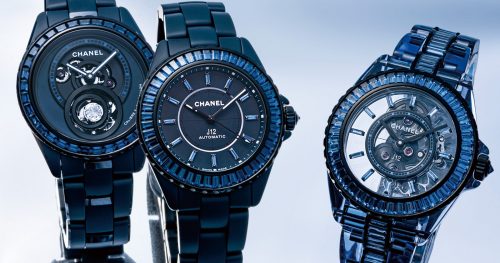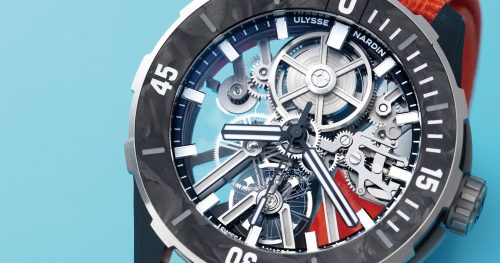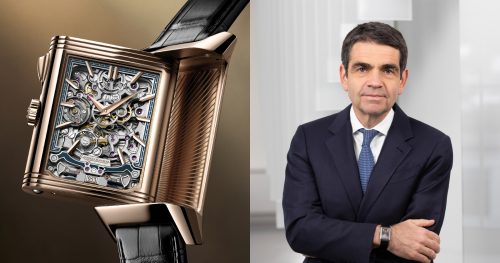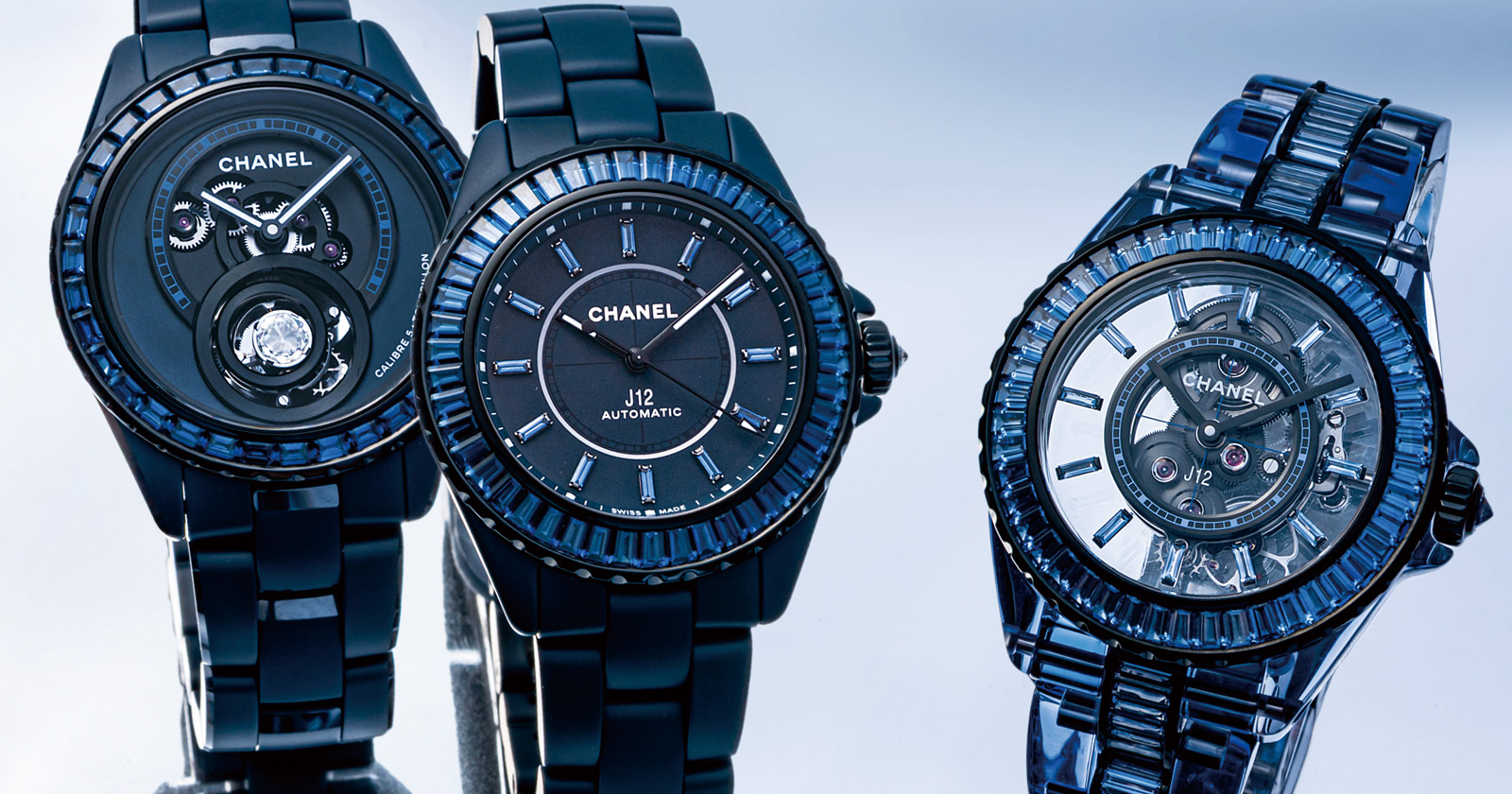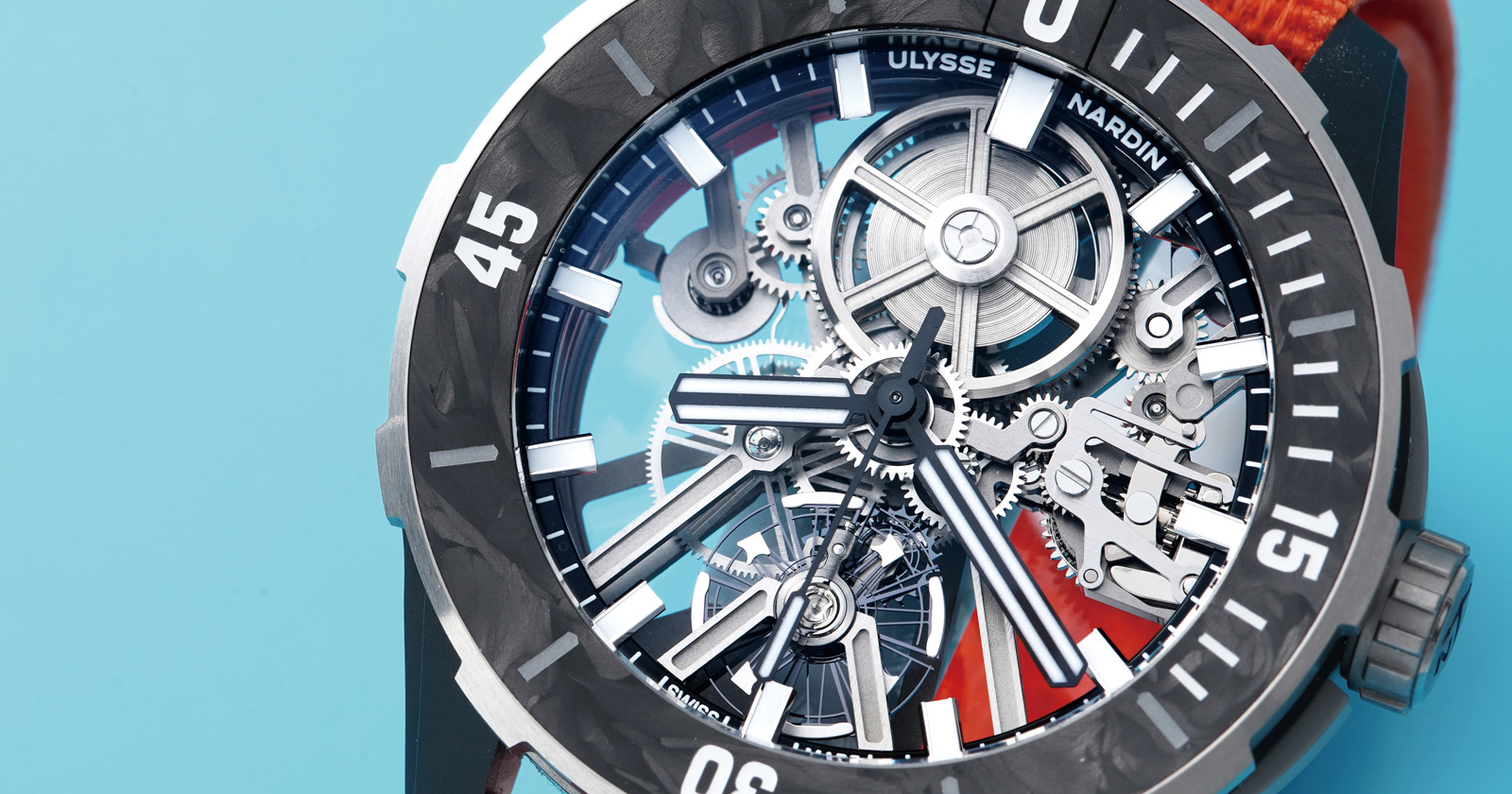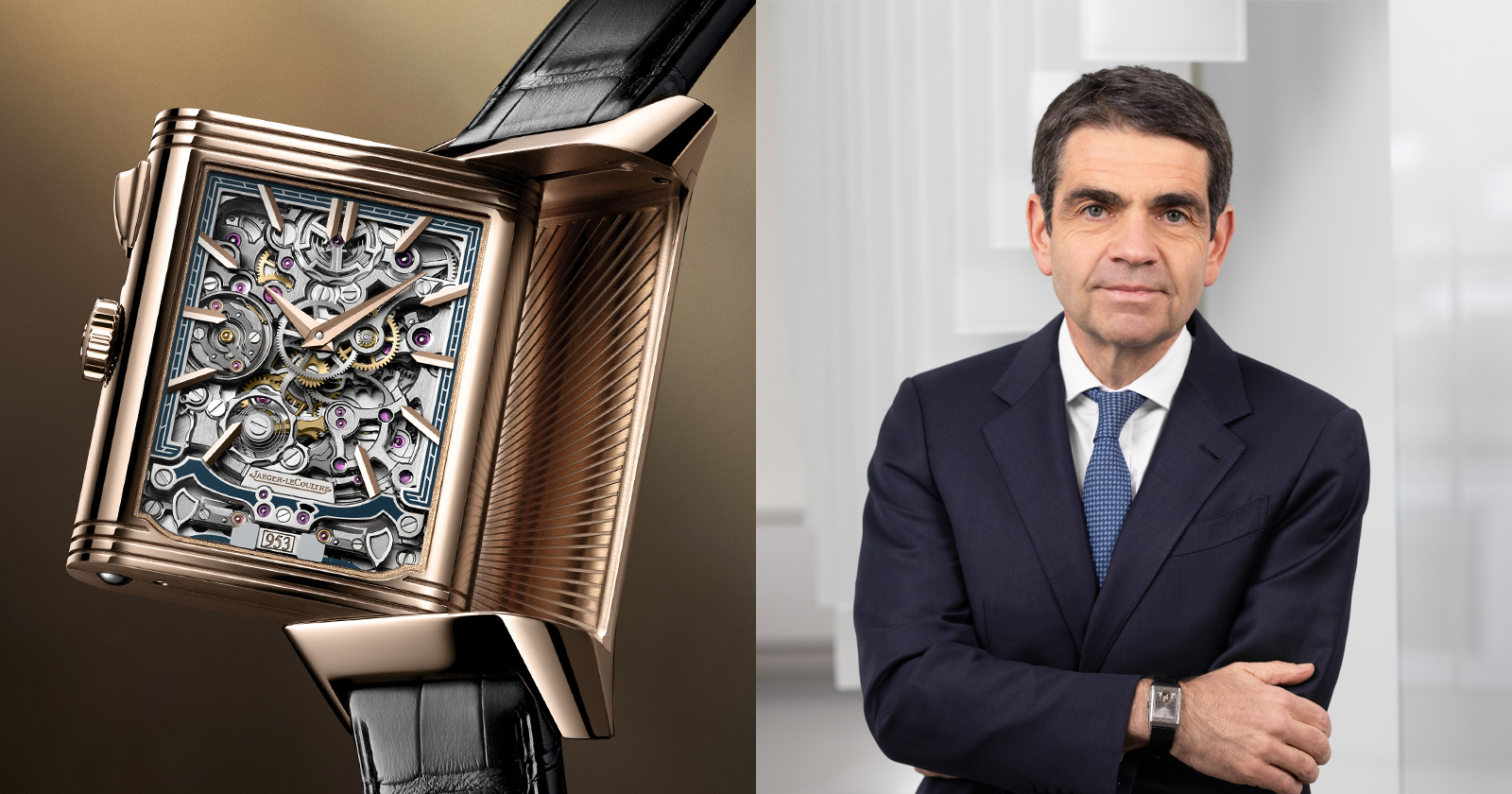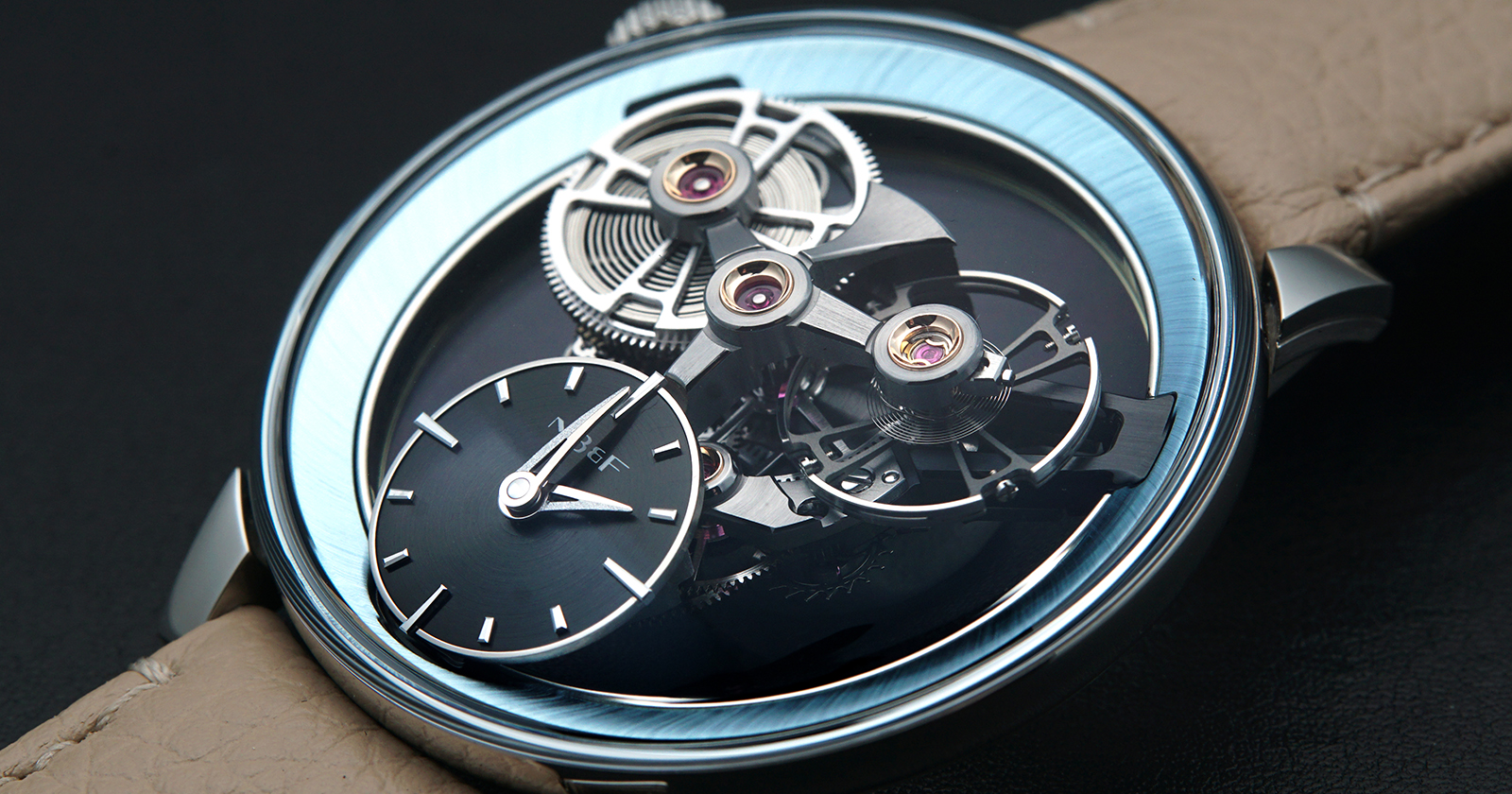MB&F A Revolutionary Perpetual Calendar
No one could expect that watches can be created in the bewildering forms of owl, frog, stealth plane and spacecraft, until Maximilian Büsser founded MB&F. Max at the very beginning stated the brand creates something beyond watches; they create Horological Machines (HM), a collection with a design so extraordinary. Yet in 2011, Max also launched the Legacy Machines collection (LM) to add a more classic and traditional side to the brand. The latest Legacy Machine Perpetual is unlike the previous LM pieces with a super clean dial. Instead, with a conventional four sub-dials layout, it is a complication and houses a ground-breaking perpetual calendar mechanism unlike anything we’ve seen so far.
If a movie is a blockbuster hit, it is almost certain that a sequel will be made. But not many sequels are better than their predecessors. If Max was in the film industry, he would definitely be a great producer or director. For he never ceases to amaze us with his new creations. The Horological Machines and Legacy Machines might have totally different emotional feel; however, it is safe to say that no matter what the collection the pieces come from, they are original, iconic, and instantly recognisable.
The new LM Perpetual is the fourth creation in the Legacy Machine lineup. It has added the complex function perpetual calendar to the brand’s portfolio after the HM6’s tourbillon. Max this time doesn’t show us an uncommon dial layout, but to concentrate on enhancing the utility of perpetual calendar. As such, he teamed up with watchmaker Stephen McDonnell, a long-time friend of the brand and played an instrumental role in the realisation of MB&F’s very first timepiece HM1. After 3 years of works, McDonnell developed this unconventional perpetual calendar movement.

Stephen McDonnell
Unlike the traditional approach building modules on the base movement, the heart of the LM perpetual is a single and fully integrated movement. In the traditional grand lever system, perpetual calendars assume that, by default, all months have 31 days. At the end of months with less than 31 days, the mechanism quickly skips through the superfluous dates before arriving at the 1st of the new month which might result in jamming gears. Besides, the movement will be damaged if the time is adjusted while the date is changing. Therefore, a common perpetual calendar doesn’t allow any adjustment between 10pm to 2am. To cope with these problems, the LM Perpetual uses a totally different mechanism. McDonnell designed a “mechanical processor” system which starts with the assumption that each month has a length of 28 days. Days are then added as needed each month allowing for 28, 29, 30, and 31-day-long months, which eliminates the risk of jamming gears and damaging the movement. In addition, to maximise ease-of-use, the system further employs a planetary gear system which allows quicksetting of the year so that it displays correctly in the four-year leap year cycle, whereas traditional perpetual calendar mechanisms require the user to scroll through up to 47 months to arrive at the right month and year.
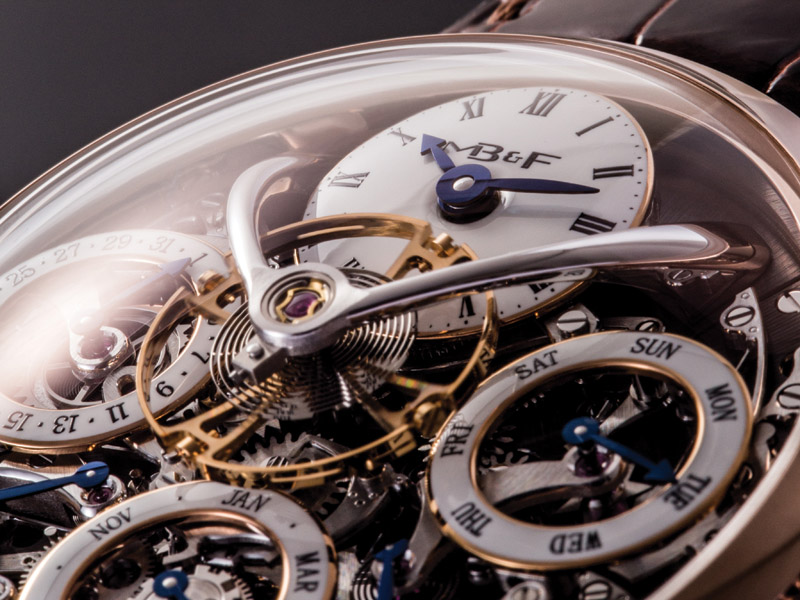
Doing away with the calendar’s big lever has also allowed the subdials rest on hidden studs, showcasing a more open skeletonised dial to enable the wearer to appreciate the intricate movement within. Speaking of readability, a crucial issue to a perpetual calendar, the three white sub-dial rings and the blue hands are very easy to read, while the time indication is shown in the white sub-dial at 12 o’clock and the power reserve and retrograde leap year indicator are located at 4 o’clock and 8 o’clock respectively. Lastly, the 44mm timepiece features a massive balance wheel hovering over the dial – something already the hallmark of the LM collection. Just a gentle note: the LM Perpetual is limited to 50 pieces and this is the last one in Asia region.
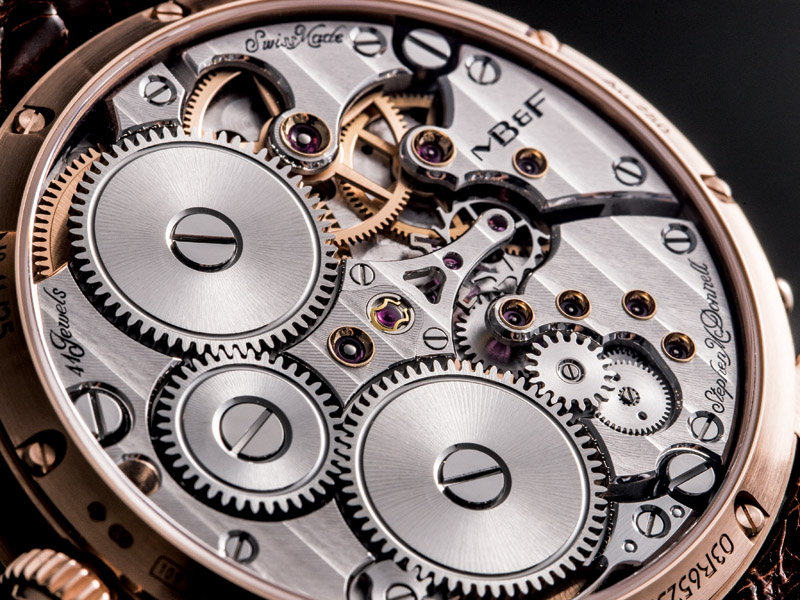
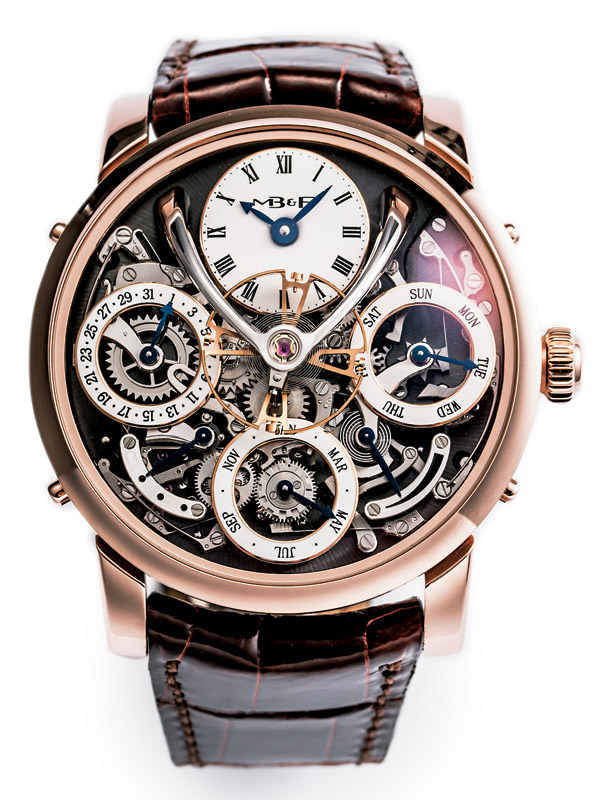
Specification
Case:rose gold or platinum
Diameter:44mm
Movement:hand-wound
Functions:hours, minutes, perpetual calendar, 3-day power reserve indicator
Limitation:50pieces
Price:around $1,104,000
LM1 Silberstein
We last year saw the LM2 featuring the admirable double balance-wheel. But it doesn’t mean it’ll close the series of LM1 (one of my personal favourites). This year, Max revisits the LM1 and joins hands with Alain Silberstein again since their collaboration producing the HM2.2 Black Box in 2009. Only recently did the watch surface. Now, let’s say hello to this newest and interesting version of the LM1 by Silberstein.

Alain Silberstein
Alain Silberstein is a watch designer well-known for his colourful Bauhaus-inspired style. The LM1’s dial is now bestowed a playful touch by the vibrant colours, which is Silberstein’s signature use of the three primary colours: red, yellow, and blue. Furthermore, the distinctive vertical power reserve indicator is even built by a blue cone, red cube, and yellow sphere, echoing the three primary colours and underscoring the whimsical shapes and colours of the piece. The most dramatic change is probably the replacement of the original twin metal balance bridges by a single transparent sapphire bridge, which is anchored by another sapphire plate at 12 o’clock. As a result, without the block of the two metal bridges, it gives the dial more visual space to allow the wearer to better see the escapement.
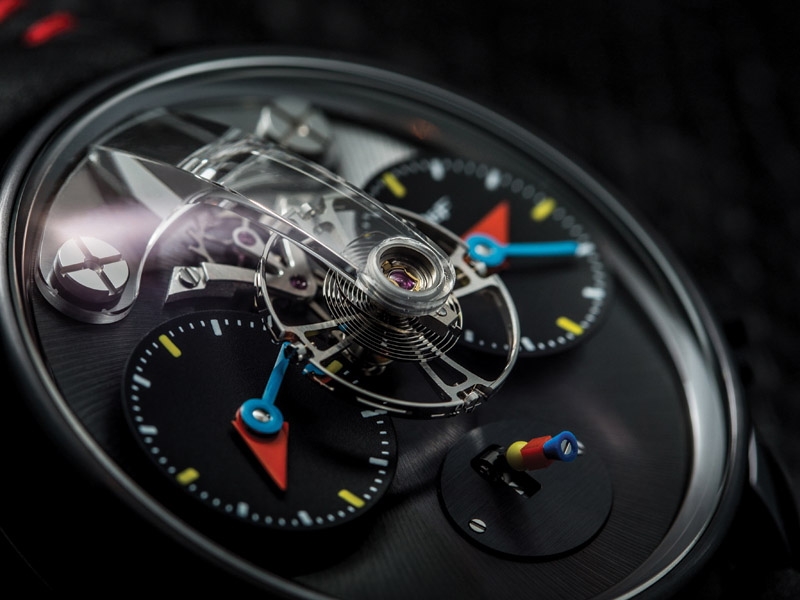
Apart from his playful design, Silberstein indeed pays meticulous attention to details. He knows people look at the hour hand first when they read time. So he makes a large red triangle hour hand and a thin blue minute hand to show the practical priority. On top of that, the two six-pointed crowns on each side of the case are used for adjusting the two time zones. The shape and colour are pure Silberstein, while the battle axe logo, inspired by the Japanese animation “Grendizer”, is no doubt MB&F. Don’t you know Max is a big fans of this animation? On the lower side of the case engraves Silberstein’s motto. The quote is, “Le vrai bonheur est d’avoir sa passion pour métier,” which translates from French to English into “making a profession of your passion is true happiness.” I believe Hong Kong people particularly find this motto bittersweet. The LM1 Alain Silberstein is available in rose gold, titanium, black PVD titanium, each limited to 12 pieces.
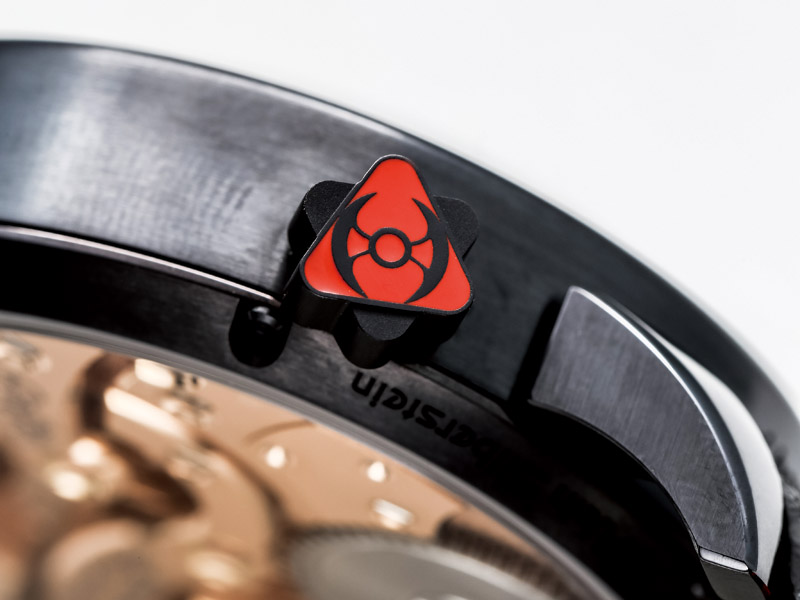


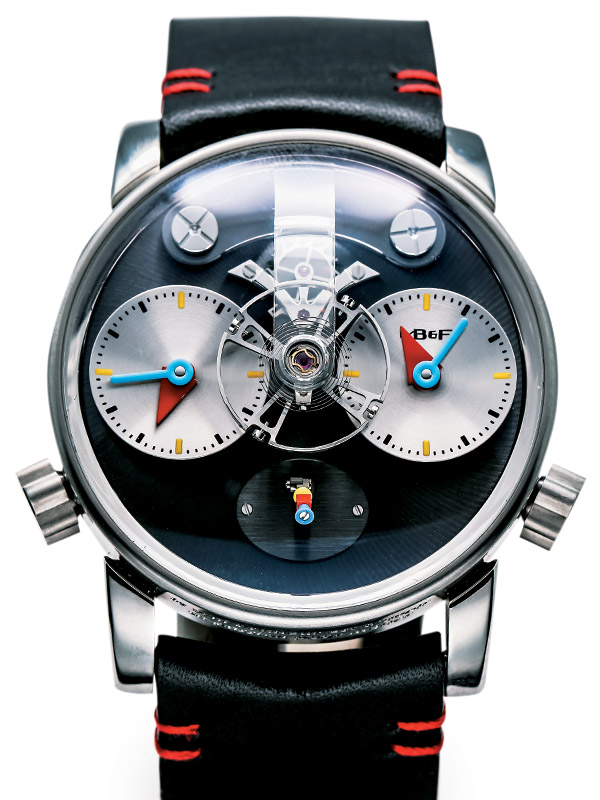
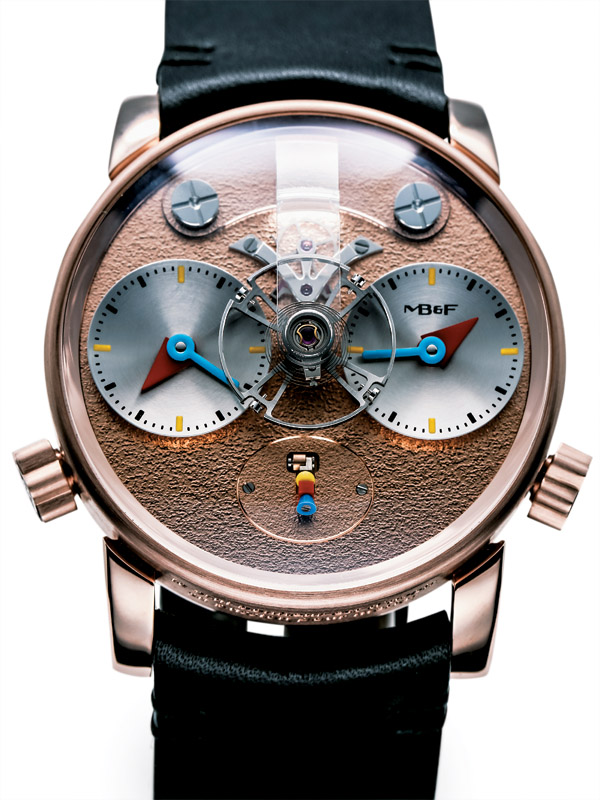
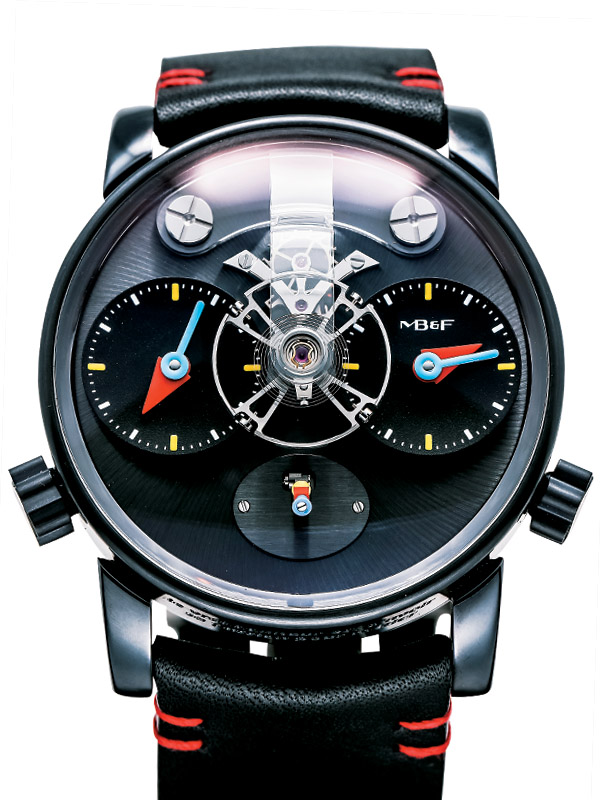
Specification
Case:titanium, rose gold
Diameter:42.5mm
Movement:developed exclusively for MB&F by Jean-François Mojon/Chronode and Kari Voutilainen, hand-wound
Functions:hours, minutes, GMT, vertical power reserve indicator
Limitation:36pieces
Price:around 79,000-88,000 swiss franc
HMX Black Badger
By seeing the watch’s name and the photos here, you almost certainly know this is the latest addition of the HMX. Does Max turn it into just an exotic luminous watch? Partially correct.
The Super-LumiNova that we are very familiar is a liquid usually applied to indices and hands in watchmaking. Apart from this, we also see other light source such as the self-powered micro gas tube to enhance the legibility in the dark. The luminous insert in the HMX Black Badger is one-of-a-kind, reiterating the core values of the brand itself. It is a solid luminescent material created by James Thompson, founder of Black Badger, who uses it to create jewellery. When comparing to the traditional liquid Super-LumiNova, this solid luminous compound is more flexible in nature and can be milled into any shape and exhibits a more powerful and long lasting glow.

James Thompson
Featuring a sleek and more curved case shape, the HMX Black Badger shares a form similar to that of the HMX, which commemorated MB&F’s 10th anniversary last year. The top of the watch boasts an open sapphire display. The original oil filter caps inside are now replaced by Thompson’s solid luminous blocks, while the colour options include “Radar Green”, “Phantom Blue” and “Purple Reign.” The colours of the material give the watch a futuristic look and can be appreciated both during daytime and particularly in dark conditions. Though the vertical forward-facing time display isn’t a new technical feat here, it is still worth mentioning such innovative design once again. The display is derived from circular discs rotating flat on top of the movement. Each of the two discs (one for the bi-directional jumping hours, one for the minutes) is printed with mirror image numerals that are reflected and magnified by two triangular shaped optical prisms so that they display vertically and clearly. The watch comes in three editions, each limited to 18 pieces. Max sounds very fond of this solid luminescent compound. Besides a wristwatch, he also extends the use of this cool material to the Starfleet Machine.
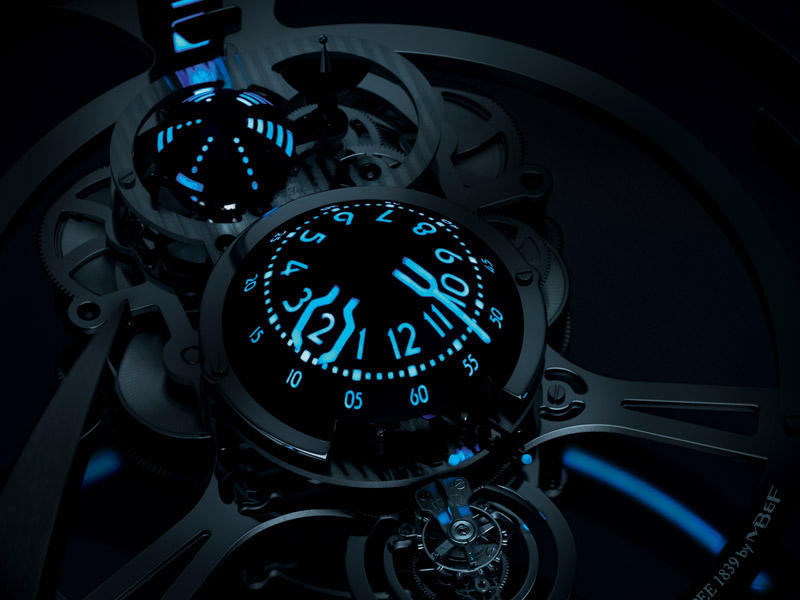
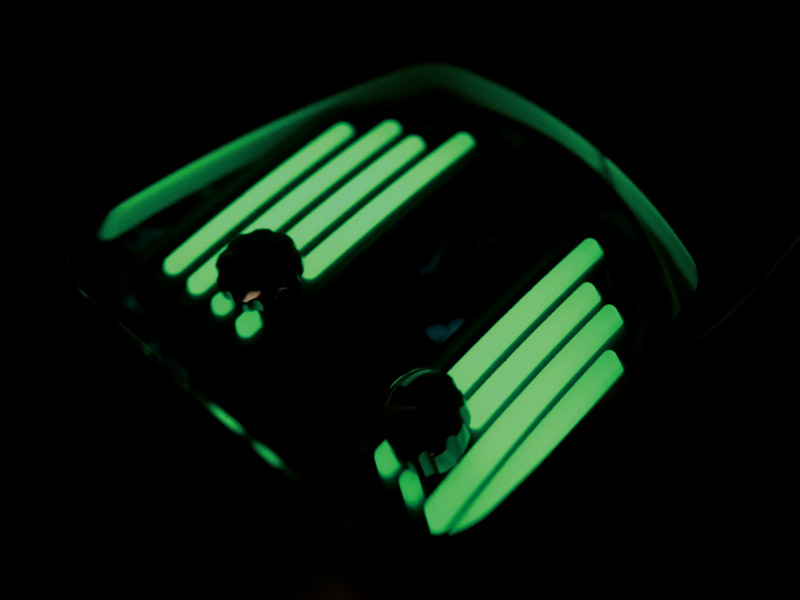
Starfleet Black Badger
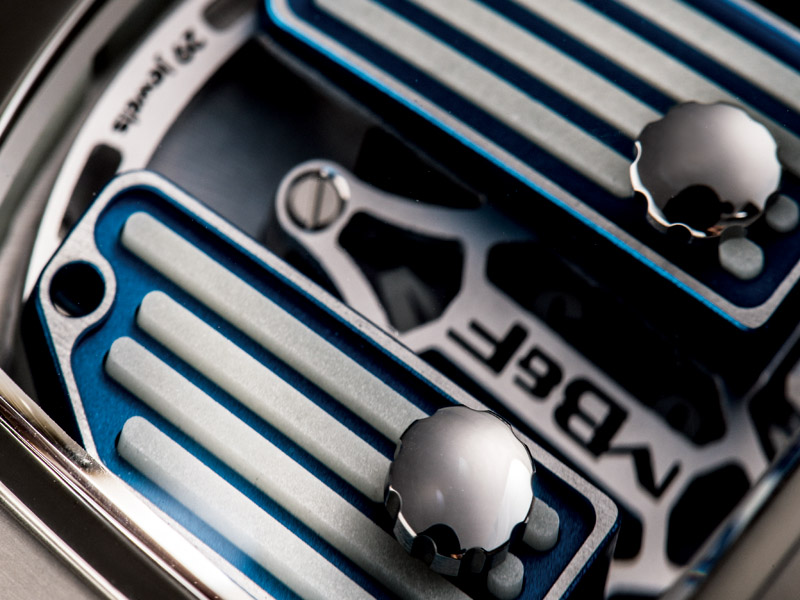
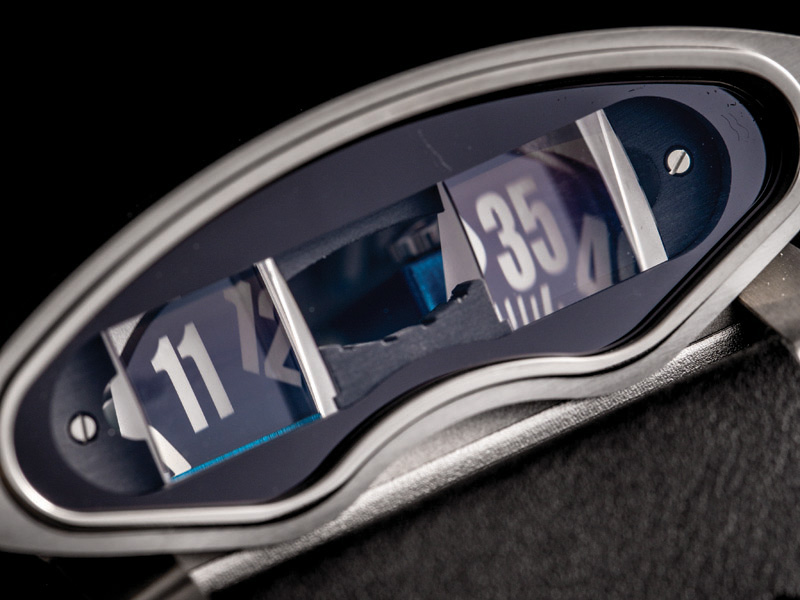
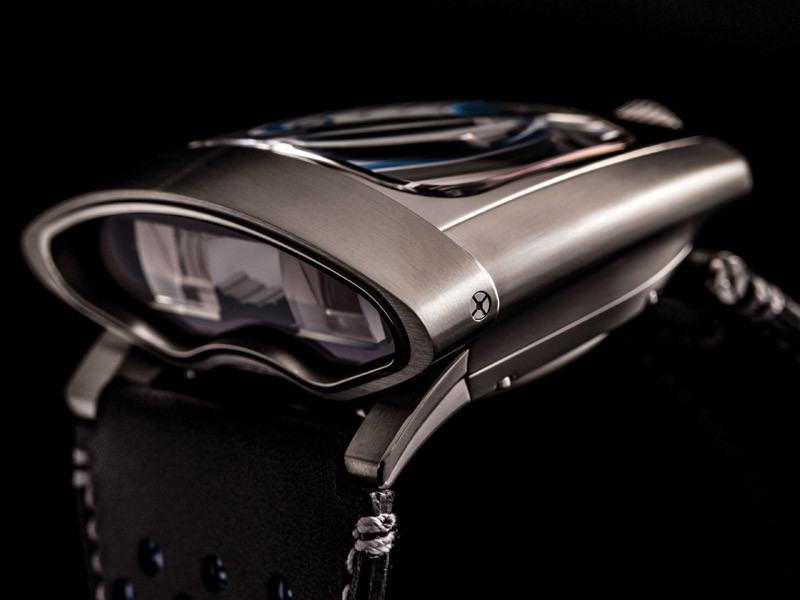
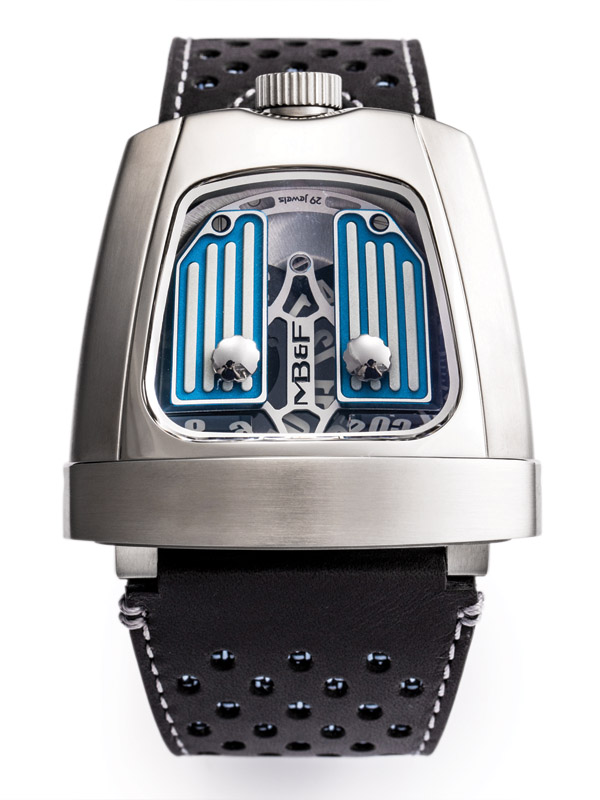
Specification
Case:titanium and steel
Size:46.8 x 44.3mm
Movement:automatic
Functions:hours, minutes
Power reserve:72 hours
Limitation:54pieces
Price:around 48,000 swiss franc
HM6
I have no idea of the Japanese animation “Captain Future” released in the 1970s. So I found it out on the internet and knew how the spaceship was look like in the animation. And then I think the sci-fi movies or cartoon producers should have invited Max to design spaceships for them.
A great many Max’s creations are inspired by something from his childhood. The HM6 Space Pirate is no exception. This piece is inspired by a spacecraft with a sphere cockpit from the aforementioned “Captain Future” and Max has turned it into the distinctive sphere indicators on the watch. There are total five domed indicators, each covered by semi-sphereical sapphire crystals, 8 for the sphere indicator and 1 for covering the tourbillon. It would be a remiss not to speak of its transparency. Because sapphire crystal is the hardest mineral after diamond, it is incredibly challenging to make it in sphere form, not to mention the uniform thickness and curviness required. And the crystals need also highly polishing inside and out to ensure the legibility.
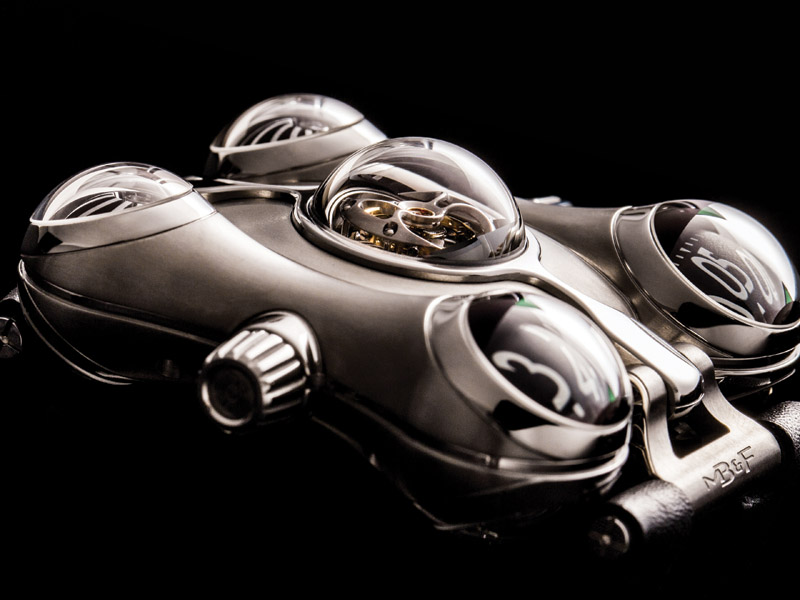
The two domes at the front are the hours and minutes indicator, the two on the opposite end house two twin spherical turbines that automatically spin to regulate the winding system against excessive speed so that the rotor never spins too fast. The tourbillon is adorned with a battle-axe cage sitting at the centre dome. Moreover, a retractable titanium protective shield is around the tourbillon in order to protect the engine’s lubrication oils from oxidising in the presence of excess UV light. The watch is quite bold in terms of size, but surprisingly light. Thanks to the grade 5 titanium case, the HM6 Space Pirate sits on the wrist extremely comfortable. Last but not least, the case itself is really smooth and very pleasant to touch.
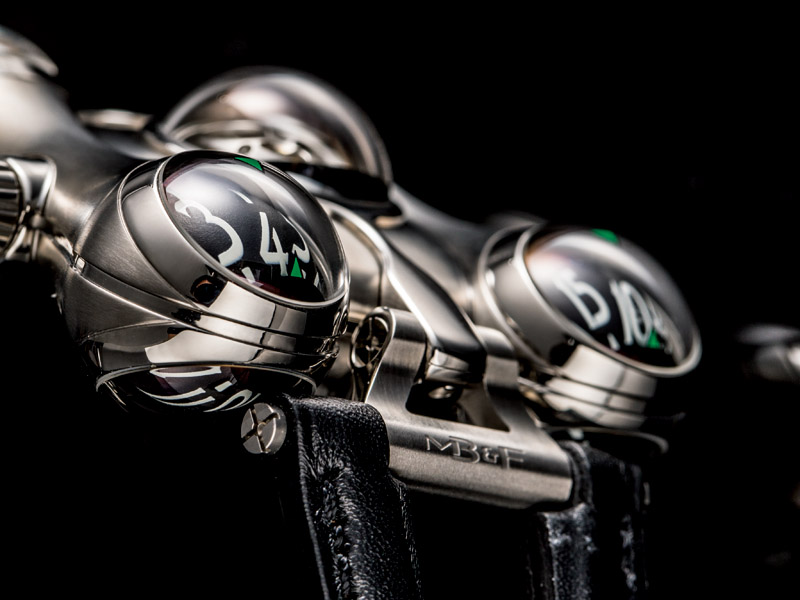
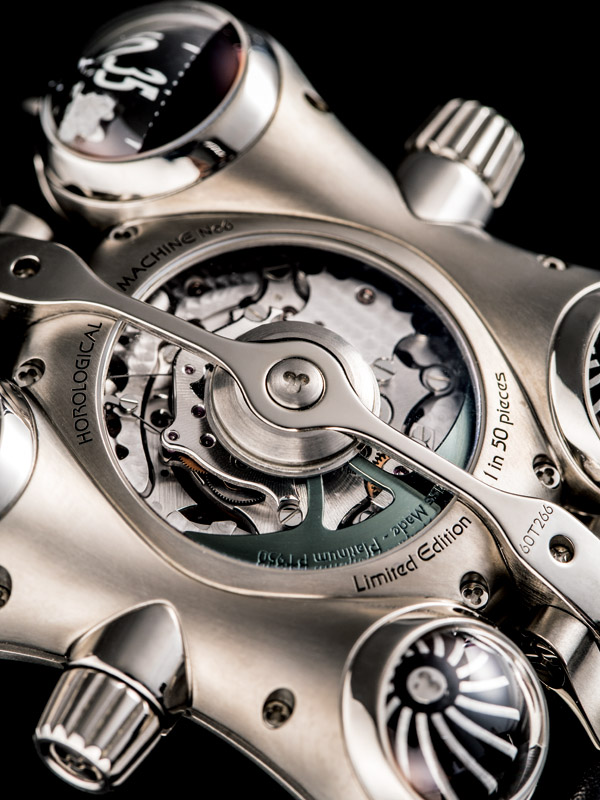
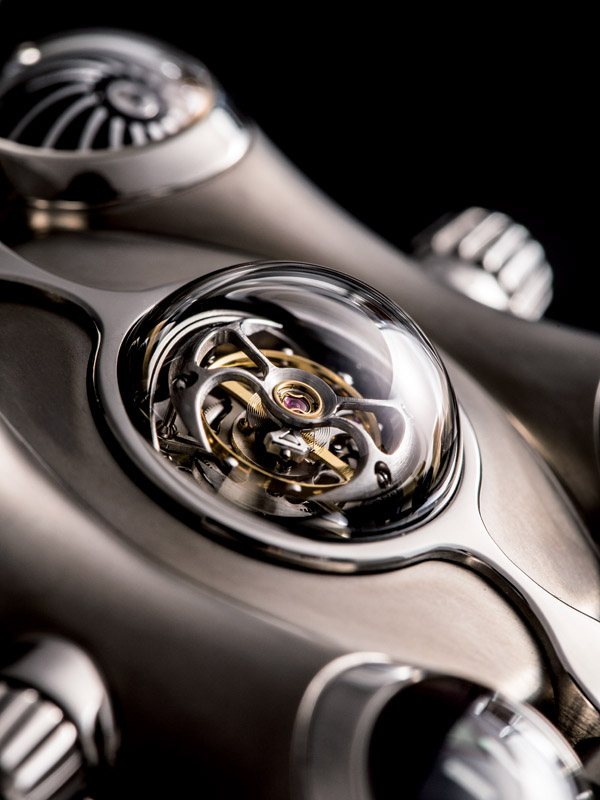
Specification
Case:grade 5 titanium or red gold
Size:52.3 x 49.5mm
Movement:developed exclusively for HM6 by MB&F with David Candaux Horlogerie Créative, automatic
Functions:separate semi-spherical aluminium indications、tourbillon、3-day power reserve
Limitation:68pieces
Price:around $1,584,000-$1,760,000
